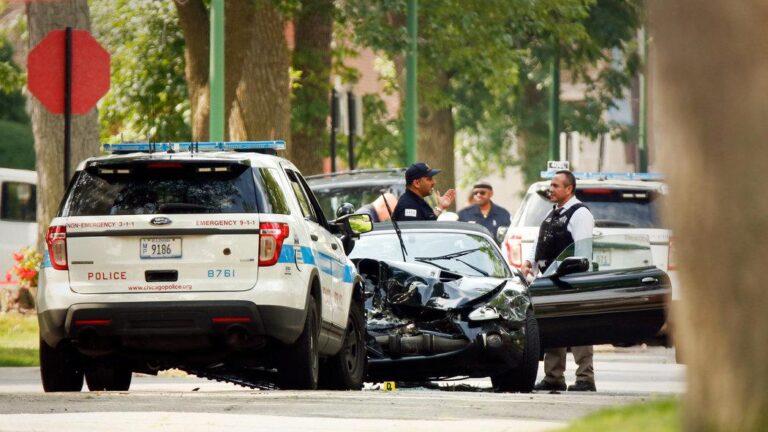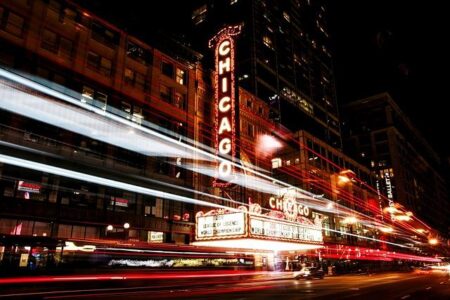Chicago Police Department’s Crime Video Archives: A Modern Asset for Law Enforcement and Community Trust
Harnessing Video Evidence to Strengthen Public Safety
The Chicago Police Department (CPD) has long relied on video recordings as a cornerstone in investigating criminal activities across the city. Their extensive Crime Video Archives encompass a wide array of visual materials, including surveillance camera footage, body-worn camera recordings, and other digital evidence.These archives not only bolster investigative efforts but also enhance transparency and accountability in policing practices within one of the nation’s most populous and diverse urban centers.
By systematically collecting and preserving this footage, CPD equips itself with powerful tools to dissect crime patterns, identify perpetrators, and support both immediate and strategic crime prevention initiatives. The department’s commitment to maintaining detailed video records fosters community trust by providing clear,objective insights into law enforcement operations.
Key advantages of integrating video archives into policing include:
- Swift Evidence Review: Officers and investigators can quickly access footage to make informed decisions in real time.
- Data-Driven Crime Mapping: Video analytics help pinpoint emerging crime hotspots, enabling smarter resource deployment.
- Enhanced Community Collaboration: Sharing relevant video information encourages public participation and awareness.
| Archive Feature | Contribution to Public Safety |
|---|---|
| Ultra-High Definition Video | Enhances accuracy in identifying suspects and witnesses |
| Long-Term Storage Capabilities | Facilitates review of cold cases and past crime trends |
| Robust Security Protocols | Protects sensitive footage from unauthorized access |
Decoding Crime Patterns Through Video Analytics
Analyzing the vast collection of CPD’s video footage offers invaluable insights into the shifting landscape of criminal activity throughout Chicago. By examining archived recordings, crime analysts can detect emerging trends, identify neighborhoods with heightened incident rates, and determine peak times for specific offenses. This intelligence supports the strategic allocation of police resources and the progress of targeted crime reduction programs.
Recent data extracted from video archives reveal:
- Spatial Concentration: Certain districts, such as the Near West Side and Englewood, experience elevated crime rates during particular hours.
- Offense Variability: Fluctuations in burglary, aggravated assault, and property damage incidents highlight evolving criminal tactics.
- Response Time Metrics: Video evidence helps evaluate law enforcement’s reaction speed, identifying opportunities for procedural enhancements.
| Crime Type | Average Monthly Incidents | Peak Time | Prominent Location |
|---|---|---|---|
| Burglary | 135 | Early Morning | Near West Side |
| Aggravated Assault | 90 | Late Night | Englewood |
| Property Damage | 50 | Afternoon | Logan Square |
Balancing Privacy Rights with Transparency in Video Access
As public interest in accessing crime-related videos grows, the Chicago Police Department faces the delicate task of safeguarding individual privacy while promoting openness.Legal frameworks such as the Freedom of Information Act (FOIA) and Illinois state privacy laws guide the department in protecting the identities of victims, suspects, and witnesses. Consequently, sensitive portions of footage are often edited or withheld to prevent unauthorized disclosure of personal information.
To uphold both transparency and privacy, CPD enforces strict protocols for video access requests, including:
- Verification of requester identity and purpose
- Time-limited public availability with explanatory context
- Complete reviews to avoid compromising ongoing investigations
| Access Control | Objective |
|---|---|
| Sensitive Content Redaction | Protect personal identities in released videos |
| Individual Case Assessment | Balance public interest against privacy concerns |
| Limited Release Periods | Prevent interference with active cases |
| Requester Authentication | Ensure responsible and lawful use of footage |
Strategies to Boost Community Participation and Oversight
Fostering stronger community involvement in the stewardship of crime video archives requires a comprehensive approach. Organizing regular town hall meetings and educational workshops offers residents opportunities to express concerns,provide input,and stay informed about how video evidence is gathered and applied.Moreover, including community members in oversight boards enhances transparency and accountability, building mutual trust between law enforcement and citizens. These boards should reflect the city’s diverse neighborhoods to ensure inclusive portrayal.
Technological advancements can further facilitate engagement by providing secure online platforms where the public can access non-sensitive footage and related data. This digital accessibility encourages informed dialog while respecting privacy boundaries. Additional initiatives might include:
- Monthly newsletters highlighting recent video releases and case updates
- Interactive data dashboards showcasing anonymized crime trends derived from archived videos
- Collaborations with local nonprofits and advocacy groups to educate on digital rights and policing transparency
| Engagement Initiative | Goal | Community Impact |
|---|---|---|
| Town Hall Forums | Facilitate open discussions on archive policies | Strengthens public confidence |
| Community Oversight Boards | Monitor archive management and usage | Ensures transparency and accountability |
| Digital Access Portals | Provide secure viewing of non-sensitive footage | Promotes informed community involvement |
Looking Ahead: The Future of Crime Video Archives in Chicago
As the Chicago Police Department continues to expand and modernize its digital video archives, these resources will remain indispensable in advancing justice, transparency, and public safety. Despite ongoing challenges related to privacy protection and data governance, CPD’s dedication to maintaining accessible and secure visual records highlights its commitment to accountability. The evolution of these archives will increasingly shape the relationship between law enforcement and the community, offering clearer insights into the realities of crime and policing in Chicago’s dynamic urban landscape.





